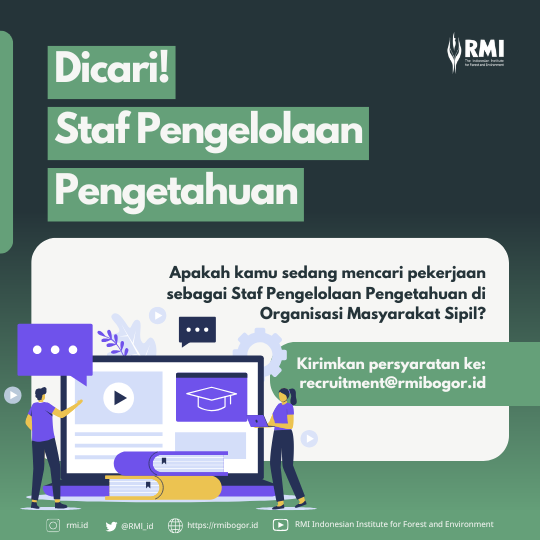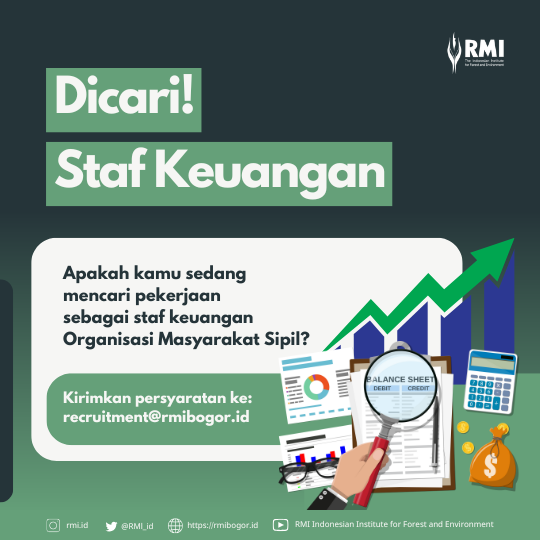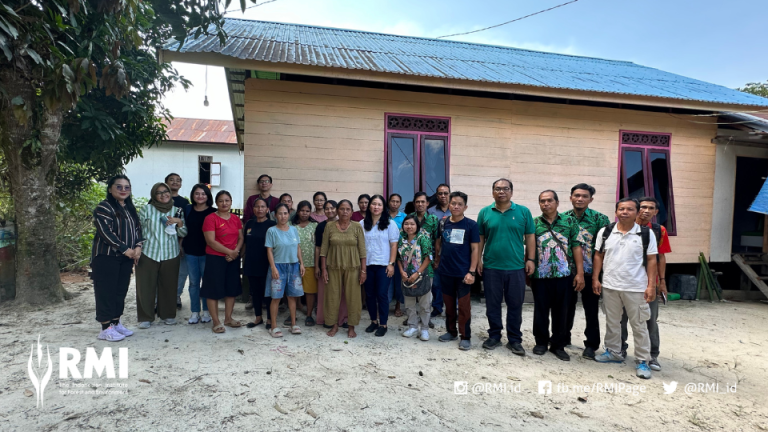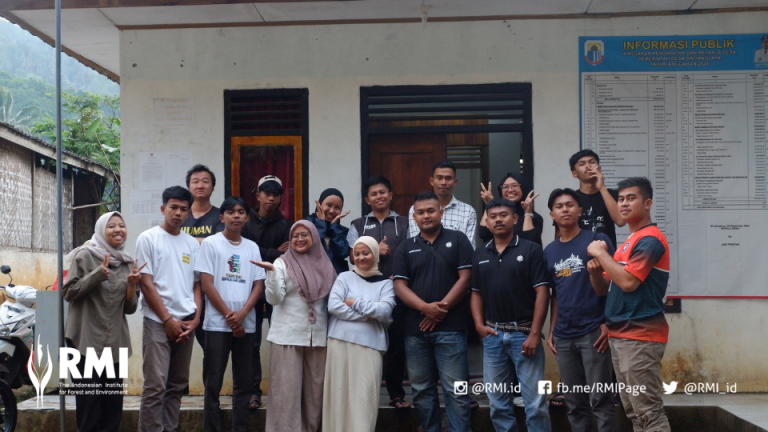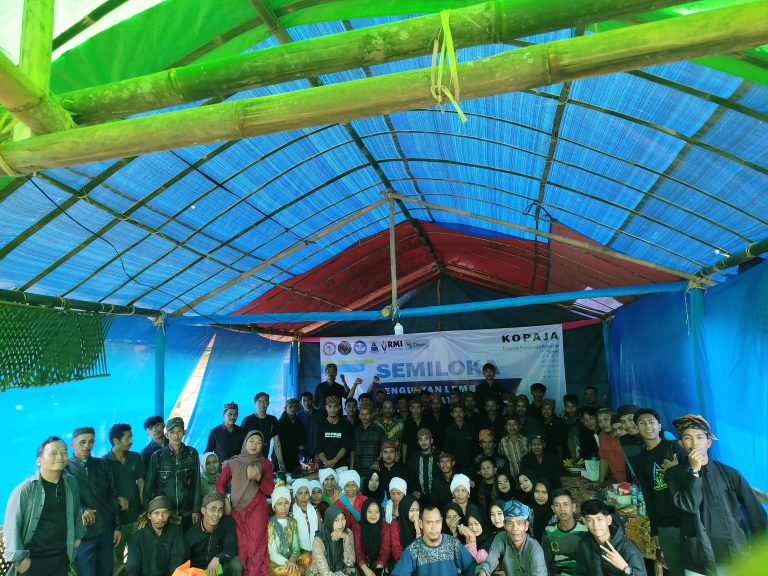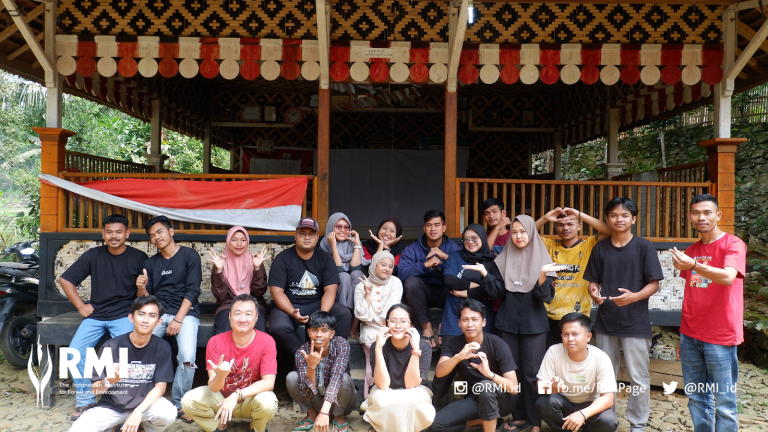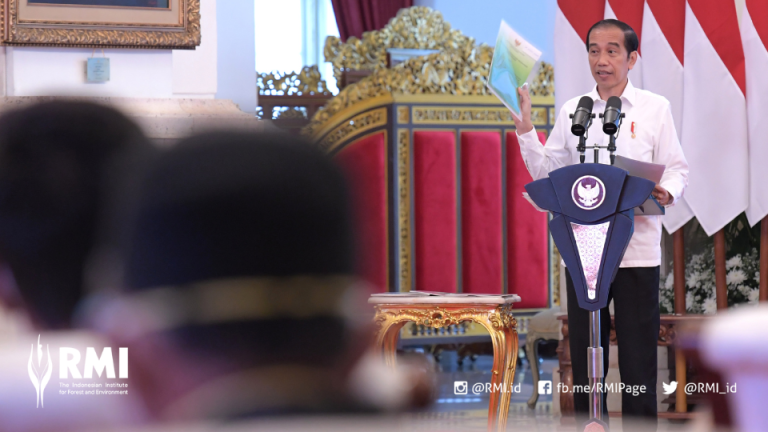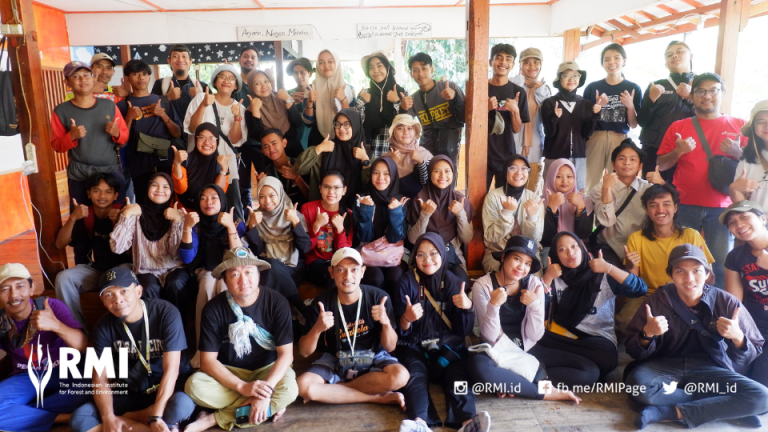
The presence of Kasepuhan indigenous youth in Riungan Gede (Grand Meeting) hosted by Indigenous People Union of Kasepuhan Banten Kidul (Kesatuan Masyarakat Adat Kasepuhan Banten Kidul—SABAKI) in 2019 was the first time ever happened in the history. It was the first time for Kasepuhan youths to contribute in advocating Kasepuhan indigenous people’s rights in riungan SABAKI; the eleventh riungan.
Located in Citorek Village, a part of Cibeber district, Lebak regency, indigenous youths were involved in riungan SABAKI that is held once in every five years, from Friday to Sunday, March 1st to 3rd, 2019. The involvement of indigenous youth—along with the indigenous women of the Kasepuhan—in this year’s riungan is a great momentum to strengthen the efforts in advocating indigenous rights towards more inclusive movement. Their presence is in accordance to Regional Regulation of Lebak Regency no. 8 year 2015 about Acknowledgement, Protection, and Empowerment for Kasepuhan Indigenous People in order to provide safe space for indigenous people.
As one of the leading organizations that advocates the rights of Kasepuhan indigenous people in Lebak Regency since 2003, Rimbawan Muda Indonesia (RMI), had specifically facilitated and organized Kasepuhan youths to speak up separately. RMI considered that the eleventh Riungan Gede SABAKI was the right time to officially involve young generation as a part of this important forum. Moreover, as a part of a community that is not often heard by the heads, the involvement of Kasepuhan youth—including the women—can widen our perspectives to fill the holes of our flaws in advocating indigenous rights, as observed by RMI.
In order to capture youth’s aspiration regarding to cultural sustainability and community empowerment among Kasepuhan indigenous people, RMI accommodated indigenous youth meeting on Saturday, March 2nd 2019 in SDN 3 Citorek Tengah. The theme of the meeting was “Regeneration: Tradition and Natural Resources Development in The Perspective of Youth” with 14 representations of indigenous youth from Kasepuhan Cirompang, Karang, and Pasir Eurih.

Indra N. Hatasura, meeting facilitator from RMI, stated that this meeting aimed to collect recommendations from youths to be submitted to SABAKI, as no similar actions to specifically discuss Kasepuhan indigenous youth development had been done before. Given the importance of youth’s role as the spearhead of Kasepuhan’s cultural sustainability, it is crucial for SABAKI to focus on creating such program, especially to counter the latent threat of disappearing insights about Kasepuhan tradition among youths.
“In regards of history and the previously asked question [about customary forest and regional regulation], honestly I just discovered that…there are people out there asking about [relating issues to] Kasepuhan to abah (father; tribal chief). Generally, youths know about only 10% of the Kasepuhan tradition. Often times, tradition becomes taboo to be told among us, nor to be taught at school,” said Awan from Kasepuhan Cirompang. His statement was delivered when Indra, who also happens to be the manager of RMI’s Capacity Building and Human Resources, tested participants’ knowledge about Kasepuhan tradition along with current issues that happened to Kasepuhan indigenous people, such as customary forest and Regional Regulation of Lebak Regency no. 8 year 2015 about Acknowledgement, Protection, and Empowerment for Kasepuhan Indigenous People.
Awan’s statement was also supported by another participant’s emphasis on how they actually want to get involved in preserving Kasepuhan culture, although sometimes were disinclined to ask about Kasepuhan customs/tradition to baris kolot (seniors; elderlies) and juru basa (spokesman). “All the trainings that had been given in Cirompang have not yet covered historical or traditional aspects of Kasepuhan…youths are not only concerned in economic (development) aspects but also in the traditions and history of Kasepuhan that are no less important than the previous aspects,” said Ajat, another participant from Kasepuhan Cirompang.

Results of the discussion show that there are several recommendations from Kasepuhan youths addressed to SABAKI. Those recommendations are: 1.) SABAKI needs to be reinforced and needs to uphold Kasepuhan indigenous people’s welfare, including the indigenous youth; 2.) The existence of Indigenous Youth Community shall be acknowledged in written acknowledgment and be involved in the boards of SABAKI; 3.) Unrecognized Kasepuhan should be registered and acknowledged by SABAKI in order to strengthen solidarity and relationship among all Kasepuhan; 4.) Kasepuhan youths demand a media platform like profile books consisting of important information about every Kasepuhan in order to know each Kasepuhan leaders; 5.) The youths wish to know deeper about SABAKI’s activities other than Riungan Gede; 6.) Also to be involved in organization activities in SABAKI—in hope of not only limited for the Olots (elderlies) but also to the younger generation of Kasepuhan as they have the rights and strong will to learn about their own tradition; 7.) SABAKI needs to create formal forum for Kasepuhan youths addressing the history of Kasepuhan as they want to be directly involved in preserving Kasepuhan culture, and; 8.) As the only next generation of Kasepuhan, the youths wish to be taught about the history and tradition of each Kasepuhan and Banten Kidul itself.
The Resolution
These recommendations were collected and compiled with separate recommendations from Kasepuhan young women by RMI to be followed up to the boards of SABAKI for considerations that can determine the future of SABAKI. The responses were positive, although the decision making had not yet involved the participation of the Kasepuhan youths.
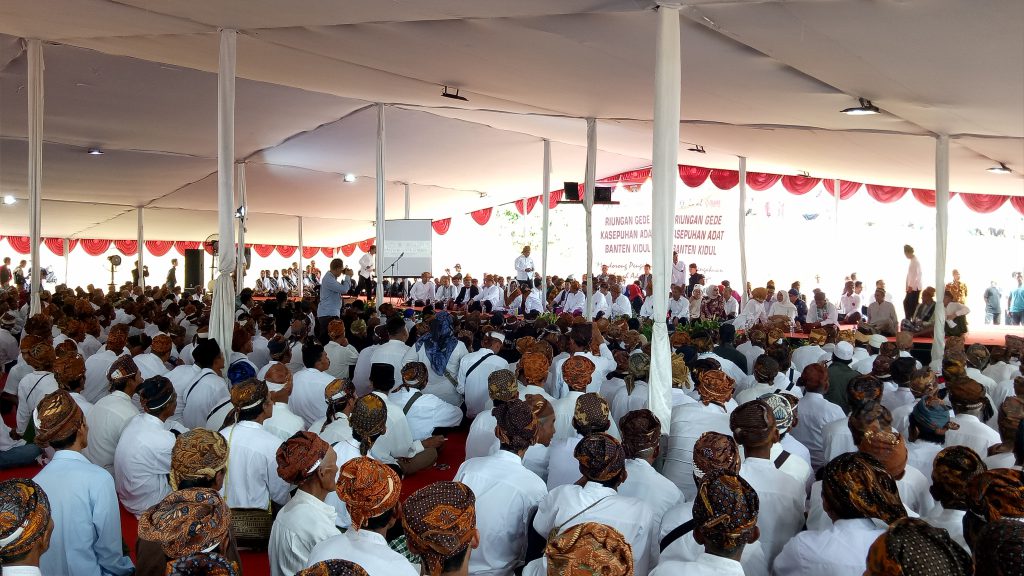
From the Declaration of Riungan Gede SABAKI XI, it was determined that several recommendations were taken to become Kasepuhan policies. Chairman of SABAKI year 2019-2024, Sukanta, read the declaration and mentioned about the youth and women of Kasepuhan’s participation in front of hundreds of Kasepuhan residents from various wewengkon (region), Minister of Environment and Forestry Siti Nurbaya, Minister of Communication and Information Technology Rudiantara, Regent of Lebak Iti Octavia Jayabaya, and other government affiliations. The declaration showed that SABAKI are committed to: 1.) Order boards of SABAKI to widen and enhance the role of indigenous women and youth, and; 2.) Encourage local schools to teach about Kasepuhan culture based on uniqueness and natural resources of each Kasepuhan.
The implementation of this declaration needs to be monitored
thoroughly to prevent SABAKI’s commitment from dwindling; rather, it has to be
put into real actions in order to benefit the Kasepuhan indigenous people. The
involvement of women and youths of Kasepuhan is only the beginning of a long
journey towards Kasepuhan indigenous people’s welfare, especially after the
establishment of Kasepuhan Cirompang and Pasir Eurih Customary Forest that
happened simultaneously with Riungan SABAKI
in March 2019. Based on a study held by Customary Forest Coalition in 2018[1],
elites who are responsible in monitoring customary forest establishment forest
would require indigenous youth’s role and participation in managing returned
customary forests to the concerned indigenous communities.
[1] This research was held by RMI, HuMA, YMP, LBBT, QBar, AMAN chapter South Sulawesi, and Bantaya and studied the process undergone by indigenous people towards customary forest establishment and its impact.


